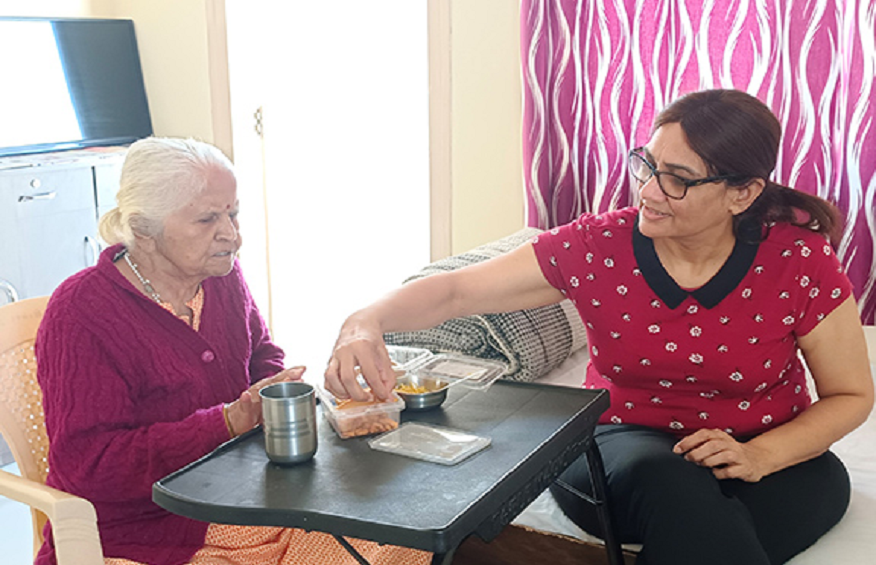A healthcare revolution has been quietly taking place in Ernakulam, a peaceful area. Palliative care, a caring and all-encompassing strategy, is becoming more popular in this region of southern India while the globe struggles with cutting-edge medical technologies and treatments. The adoption of palliative care in Ernakulam is more than simply a medical procedure; it’s a concept aimed at improving quality of life and offering comfort to individuals dealing with terminal diseases.
We explore the relevance of palliative care in Kochi and how it is improving the lives of patients and their families in this blog.
Palliative Care Movement
A group of medical experts, volunteers, and benefactors first experimented with palliative care more than 20 years ago after seeing the need for a more compassionate approach to healthcare. Strong community links and a compassionate attitude in the area created the right environment for the growth of this movement.
The core of palliative care in this country is provided by trained volunteers who offer a variety of services such as home visits, pain treatment, emotional support, and help with daily tasks. Patients will receive complete care that goes beyond traditional medical care thanks to this cooperative effort.
Holistic Approach to Care
Palliative care in Ernakulam extends beyond only treating physical ailments. It acknowledges that a patient’s psychological and emotional health are equally important. Volunteers and trained professionals collaborate to offer patients and their families psychological and emotional support as they cope with the difficulties that serious illnesses entail. This all-encompassing strategy reduces the emotions of loneliness that frequently accompany these disorders by fostering a sense of belonging and community.
Empowering Patients and Families
The emphasis on patient and family empowerment is one of palliative care’s greatest assets. Patients can choose their own care by being informed about the condition, available treatments, and possible consequences. Families are given the required training and assistance to offer care at home, making the atmosphere for the patient more pleasant.
Community Involvement and Support
Strong community engagement is one of the most distinguishing aspects of Palliative care in Kottayam. To provide care outside of hospital walls, volunteers, local groups, and non-profits work together. Palliative care programs that are community-driven enable patients to receive care and support in the convenience of their own homes. This strategy not only reduces the strain on healthcare facilities but also cultivates a sense of care and belonging that is crucial for individuals with terminal illnesses.
Training and Education
Strong community engagement is one of the most distinguishing aspects of palliative care facilities. To provide care outside of hospital walls, volunteers, local groups, and non-profits work together. Palliative care programs that are community-driven enable patients to receive care and support in the convenience of their own homes. This strategy not only reduces the strain on healthcare facilities but also cultivates a sense of care and belonging that is crucial for individuals with terminal illnesses.
Pain Management and Symptom Relief
Pain control and symptom alleviation are essential components of palliative care. These elements are heavily emphasized in the palliative care strategy used different centres, making sure that patients are as comfortable as possible. Patients can find respite from the physical and psychological effects of their illnesses by combining medical care, therapies, and emotional support. This all-encompassing strategy frequently results in greater patient outcomes and an enhanced overall experience.
Challenges and Future Prospects
The palliative care methods in some centres and some retirement homes have been incredibly successful, but it has not been without difficulties. Reaching remote places, securing continued financing, and providing volunteers with thorough training all continue to be issues. The movement’s successes, however, much exceed its difficulties. The future of palliative care in India continues to encourage other areas to adopt comparable strategies.
Conclusion:
The adoption of palliative care methods signifies a paradigm change in healthcare. The way serious illnesses are treated is changing as a result of this movement’s emphasis on comfort, compassion, and community. It serves as a reminder that, despite the complexity of contemporary medicine, the core of caring for patients is to treat them as entire people, with the importance of their emotional and spiritual health being equal to that of their physical health.
